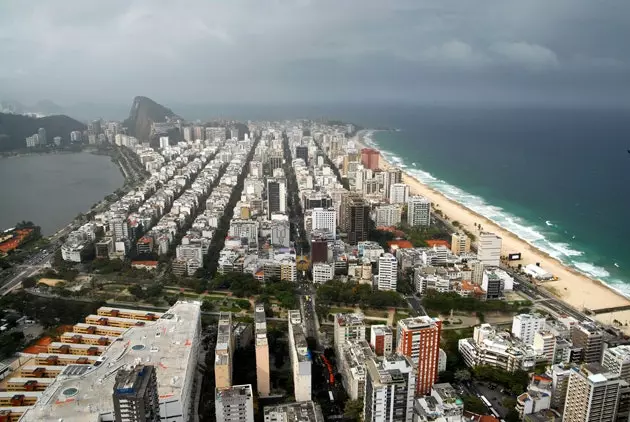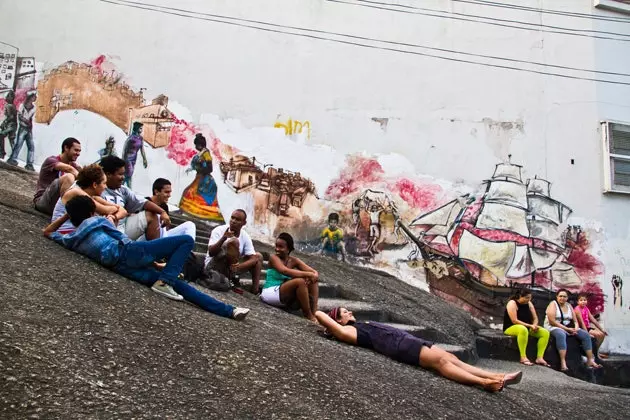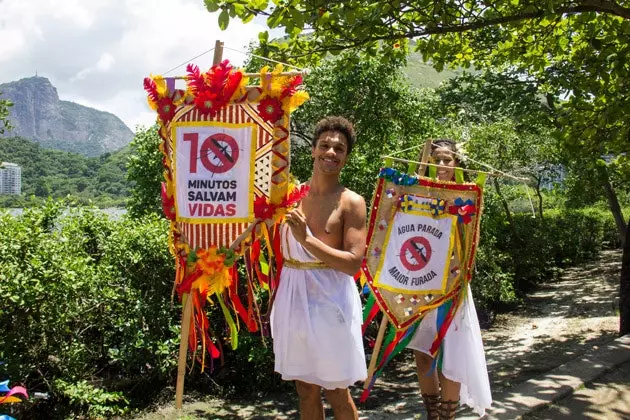
There are no serious reasons to worry
1) PUT THINGS IN THEIR PLACE
The war scenes that are experienced in many favelas and that fill the television news take place in suburbs far removed from tourist areas. The neighborhoods in the southern zone (which goes from the center to Leblon) are a bubble of security compared to what happens on the outskirts. In addition, during the Olympic Games the city will be armored: 85,000 agents, including military and police, will form the largest security device in the history of the Olympics.

The neighborhoods of Ipanema and Leblon, a security bubble
2) IMITATE THE CARIOCA DRESS CODE
To avoid robberies, concealing the foreigner condition as much as possible always helps. Although the Ibizan look is ideal for photos at Ipanema sunsets, it will always be better to wear rubber flip flops (Havaianas are an institution in Rio) than elegant esparto sandals. Heels can stay in Spain without problems. Watches, necklaces and earrings too. The pull of the golden cord is a classic among assaults. It is best to take just enough money to spend the day and copy a technique very internalized by the cariocas: keep the bulk of the money in your private parts and carry around 20 or 50 reais in your pocket to be able to offer them in the event of a robbery.

Golden rule: less is more
3)AVOID SOME NEIGHBORHOODS AT SOME HOURS
Copacabana, Ipanema, Leblon and Barra de Tijuca (where the main Olympic park is located) have the majority of hotels and are very safe neighborhoods. Santa Teresa is a charming neighborhood with a bohemian soul and stately homes nestled between the hills, but the nooks and crannies of its quiet streets are an ideal refuge for robbers. In recent months the number of robberies at gunpoint has grown. To avoid risks, it is better to go during the day and not stray too far from the Largo do Curvelo-Largo dos Guimarães axis, the busiest area.
The historic center is a ghost town on weekends , when the offices that fill it with life on weekdays close. Although it is preferable to visit it from Monday to Friday, during the Olympic Games the situation will be somewhat different because the city council intends to concentrate all the “Olympic spirit” here: between the XV square and the Mauá square the fanzones will be located , with giant screens, concerts and an extensive leisure offer, so the region is expected to be an anthill 24 hours a day.
4) DO NOT FEAR PUBLIC TRANSPORTATION
The Rio de Janeiro metro is very reliable and in the buses the main risk is to fall on one of the skids at 80 per hour that drivers from Rio de Janeiro like so much. No need to worry too much, but On the bus, if you are sitting next to a window, it is better not to take out your mobile. It will not be the first time that taking advantage of a traffic jam a thief jumps from the street and sweeps him away in milliseconds. Official taxis (yellow with a blue stripe) are also safe and for a tourist they may be a better option than Uber cars : Despite being much cheaper, they are full of inexperienced drivers who do not know the streets.

They get you out of trouble at any time
5) DO NOT GET LOST ON THE BEACH
The main must for any tourist in Rio is putting their feet in the sand. It's great to take a nap to the sound of the waves, but don't get lost with your bags and backpacks. A typical beach phenomenon is the arrastão: It consists of a stampede of young thieves who coordinate to run at the same time and take everything they catch in their path. The phenomenon gives for an anthropological study: realizing what is happening, many bathers begin to run disoriented in all directions, which further fuels the chaos. In case of arrastão you have to do like Simba when all those wildebeest ran over him. Be quiet and wait for the storm to pass. Usually it's just a scare. In addition, this type of theft is more common on summer Sundays, when there is no room for a pin on the beach. (Although it may not seem like it, the Games are held in the middle of winter).
6) VISIT THE FAVELAS, BUT WITHOUT TRUST
Visiting a favela became a tourist option since an ambitious 'pacification' process was launched in 2008 to drive away drug traffickers by building permanent police bases. The favelas of Santa Marta, Babilônia and above all Vidigal managed to 'pacify' themselves and are full of hotels, hostels and restaurants for tourists. But we should not trust either: in recent months there has been an uptick in violence and shots have been heard again, although always in a very isolated way. In any case, it is always preferable to be accompanied by a local. Many agencies and cooperatives of residents of the favelas themselves organize guided tours.

The favela of Santa Marta
7) HOW TO REACT IN CASE OF ROBBERY?
In Rio de Janeiro robberies are done with brazenness. In fact, the concept of a stealthy pickpocket is not as common as it is in Europe. Most thieves prefer to confront their victims face to face and in many cases threaten them by brandishing weapons. What to do then? Run away? Mistake. Resist? Mistake. Use that self-defense technique you learned in the gym? Even worse. Unfortunately the only option is to give everything and resign yourself. Any attempt to resist can end very badly. Most robbers are armed, in many cases they are nervous because they are under the influence of drugs and will not think twice before shooting. It is best to remain calm and deliver everything quickly. **To make the corresponding complaint, it is advisable to go to the special police station for attention to tourists (Deap) **, in front of Shopping Leblon, where there are police officers who speak several languages.
8) AND IN THE EVENT OF A SHOOTING?
It is very rare for a tourist to be shot dead just because he was 'walking by'. Unfortunately, this is indeed a daily routine for hundreds of thousands of cariocas who live in the suburbs, where stray bullets wreak havoc. In the southern tourist area, shots are hardly heard and when there is a shootout it is due to clashes between rival drug factions, normally in inaccessible places at the top of the hills. In case you hear shots (not to be confused with firecrackers, very common in the favelas) You have to seek shelter and lie down on the ground , in case a stray bullet goes through windows or doors.
9) THE ZIKA MOSQUITO, AN UNFOUNDED FEAR
The majority of cariocas observe in disbelief the alarmism generated by some athletes who have given up traveling to Rio de Janeiro for fear of the Zika virus. In the city the situation is absolutely normal and people stopped buying mosquito repellent for months. The number of infected has fallen drastically as temperatures dropped and with them the proliferation of the dreaded Aedes Aegypti (which gave rise to some of the best costumes last carnival). The World Health Organization has also denied any problem and only recommends that pregnant women refrain from traveling to Brazil.

The carnival, an opportunity to raise awareness
10) WALK WITHOUT FEAR AND USE COMMON SENSE
Rather than insects or bullets, first-time tourists to Rio will have to focus on seemingly more mundane concerns: traffic accidents or the strong waves of the Atlantic also kill people and do not occupy the front pages of the newspapers. It may sound scary reading everything in one go, but using common sense everything will go smoothly. The worst memory of most tourists does not go beyond a hangover after confiding in the capirinhas. Also, if they call it the 'Wonderful City' it will be for a reason.

Beware of the waves that the Atlantic spends
